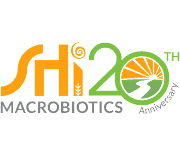The world around us is constantly changing, balancing and harmonizing. In macrobiotics, this is represented by yin and yang. Yin and yang is a way of seeing life by recognizing everything is either one or the other. With that being said, yin and yang cannot exist without the other. And can transform into each other. These two sides are never stagnant. Which means our diet and lifestyle should not be static either. Since, sickness can become health and health can become sickness. Understanding the principles of yin and yang helps us make the essential adjustments to our diet and lifestyle to continue creating health instead of sickness.
What is Yin and Yang?
Yin and yang is used to add order, harmony, and transformation into our lives. A diet and lifestyle that is suitable for one person at a certain time may not be the right one for someone else. And diet and lifestyle should evolve with new seasons, weather, and environment.
Why are the Principles of Yin and Yang Important?
There are three reasons:
Health is not a fixed state. A static diet and lifestyle throughout the year only moves you towards sickness instead of health. As the energy and environment changes, you need to shift the way you cook meals, add more variety of foods into your diet and create daily activities to stay balanced. For instance, spring is a time to begin eating light and refreshing foods and be more active. A great way to add a variety of seasonal foods and vegetables to the diet is visiting a local farmers market.
The second important reason is true healing of the body, mind and soul happens when these two energies, yin and yang, are balanced.
The third reason is opens us up to relating differently to our environment. When eating seasonal plant-based diet, it becomes important to support local farms, learn to care about where your food comes from, and feel more connected to the world.
Why is Macrobiotics Principles of Yin and Yang Different Than Traditional Chinese Medicine?
Traditional Chinese Medicine base yin and yang on metaphysical and philosophical attributes. For instance, heaven is considered more creative, active, and dynamic, therefore, more yang. While earth is considered passive and inactive, therefore, more yin. However, George Ohsawa, the father of macrobiotics, changed principles of yin and yang to structural and physical characteristics. Based on his definitions of yin and yang, Earth is solid beneath our feet and compact than it is more yang. While, heaven is wide and expansive so more yin.
Keep in mind, neither interpretation is wrong. But when it comes to a macrobiotic diet and lifestyle, it is best to use the principles of yin and yang created by George Ohsawa.
Yin and Yang Principles
What is the Relationship Between Yin-Yang and Five transformations?
Each element of the five transformations are connected to a yin organ and yang organ. When the element is balanced, it means the organs are working efficiently and we are at good health.
- Water: Bladder (yin) and Kidneys (yang)
- Tree: Liver (yang) and Gallbladder (yin)
- Fire: Small Intestine (yin) and Heart (yang)
- Soil: Spleen-Pancreas (yang) and Stomach (yin)
- Metal: Large Intestine (yin) and Lungs (yang)
Yin and Yang Foods
Yin foods include beans, leafy vegetables, fruits, sweets, sugar, chemicals and drugs. While yang foods include root vegetables, fish, poultry, meat, eggs and salt. The most balanced foods are grains.So grains should be the main component of every meal.
Principles of yin and yang are taught briefly in the beginner course. While the Intermediate and advanced course gives students a deep understanding of the principles and concepts of yin and yang to be able to integrate into their macrobiotic diet and lifestyle. Start a course today!




SHI relies on your support.
This content is possible because of donations from people like you. If you valued this article then take a moment and make a donation to benefit the SHI community. Any amount truly makes a difference.
Give $25, $50, $75, $100 or a different amount that makes sense for you.
Donate Now